Steph W. from SEOPressor


...help you check your website and tell you exactly how to rank higher?


94
score %
SEO Score

Found us from search engine?
We rank high, you can too.
SEOPressor helps you to optimize your on-page SEO for higher & improved search ranking.
By winniewong on January 4, 2019
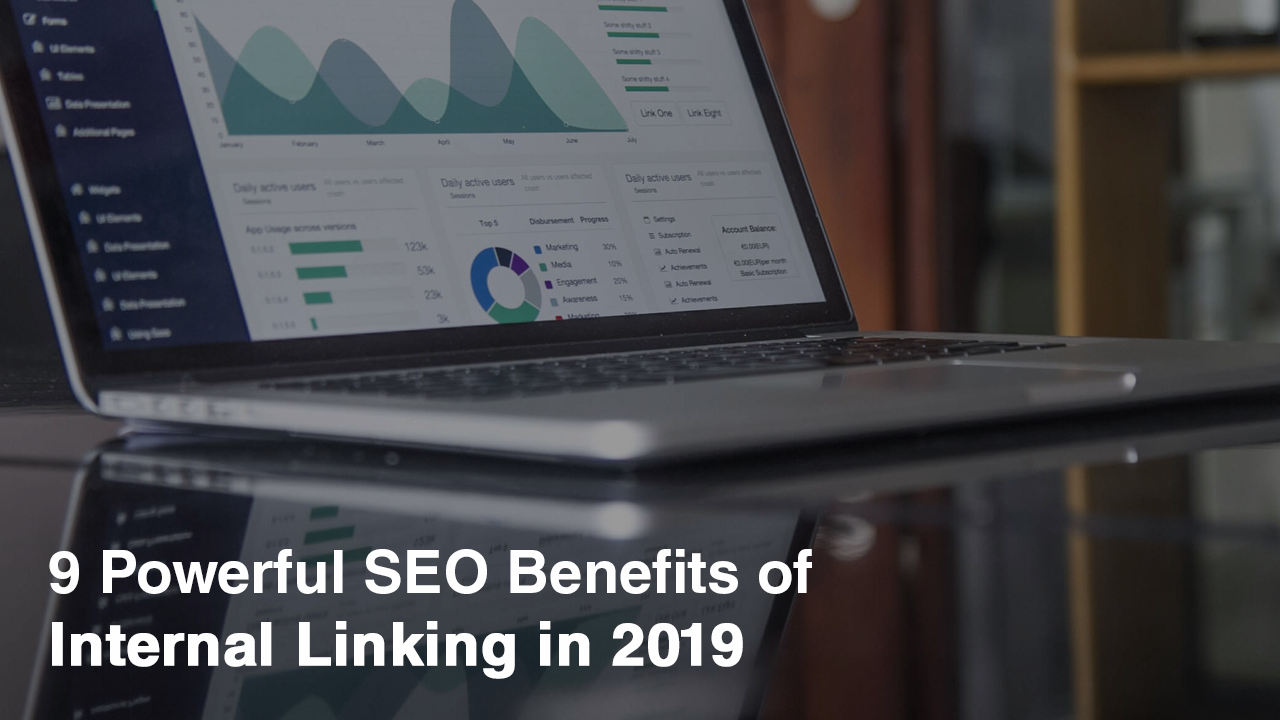
Even if you’re brand new to SEO-optimizing, you’ve probably heard that it’s good to include links in your web pages. Inter linking in SEO are important for the same reason that you cite your sources when writing an academic paper.
That being said via linking, your content is deemed credible.
Most of the marketers out there have only been emphasizing building backlinks for their websites, believing it is one of the main factors used by search engines to evaluate the quality of a website for ranking purposes.
Without a doubt, it is.
But there is another major factor almost as important, that is often being neglected. That is internal linking.
Internal linking is essential for a website’s on-page SEO, and it is an evergreen SEO strategy that should really be practiced by every SEO marketer out there.
Today, we will talk about the powerful SEO benefits of internal linking.
Before that, let’s dig a little bit more on the fundamental of internal linking.
Internal link occurs when you link one of your pages to another page of yours.
In SEO terms, internal linking is a page with a hyperlink that leads to the other pages under the same domain, such as this link to an article on the SEO 2019 trends.
However, it must also be noted that internal linking shall not be overdone (best kept at 3-4). Link only when it is necessary, do not link for the sake of linking as it will backfire!
As you can see, all these blue links here in this blog, 90 percent of these, link to other pages under the same domain.
One of the best examples of internal linking can be seen from Wikipedia.
For every single entry on Wikipedia, they build hundreds, if not dozens of internal links to the other results. What this does is, it helps Google and other search engines understand what the other pages are about.
If you want a more detailed understanding – read on. You’ll get your head around the benefits of internal linking as we go along. If you want to dig deeper on the overall aspects of internal linking, this post says it all.
The creation of internal linking is an important element in on-page SEO. One good thing about internal linking is that the site owner has complete control over internal links, so it’s vital to make the most out of it.
Apart from the SEO values, internal linking is also valuable to your user experience.
Your job as an SEO marketer is to create a friendly site structure and use internal links to guide both search engines and users to the most valuable pages of your website.
There are 2 primary considerations you need to make when thinking about your website’s internal link structure:
i) Users: Get users from where they are to where they want to go as efficiently as possible
ii) Search Engines: How a search engine will view the internal links on your site and how they will pass their weight
When you master internal linking, your whole site stands to benefit massively.
So, let’s take a look at the 9 beneficial aspects of internal linking that can help you achieve success along the way when done right.
As a site owner, you have full control over the internal link building on your site. Therefore, you can design the exact reading path and navigation experience for the visitors to your site.
Readers lands on your website with very personalized intentions and needs. Some are here to look for information, some are looking for your product or service description, others may be finding ways to communicate with you.
These intentions and needs can be answered well by building internal links.
Bring the reader to an accurate, or at least relevant page so that they can get more information. Failing to do so will hurt your SEO, badly!
If you don’t know already, search engines appreciate websites that provide a good user experience.
There are 3 ways the user navigation and experience are affecting your website SEO directly:
If users find your website worth reading, whereby they are able to find the answers they are looking for, they will stay longer at your site to discover more. Longer time on page improves a website’s SEO. (We will discuss later in this blog)
Navigating users to a more accurate and relevant page within your domain will increase your overall page view at the domain level. A higher page view is benefiting your website’s SEO.
When you hear about bounce rate, it is not favorable for SEO if it is high bounce rate. Well, we do not have full control of the kind of visitors who will land on our website, but we certainly have full control over how we want them to feel and see.
In short, make sure your internal linking is giving users’ a better navigation experience.
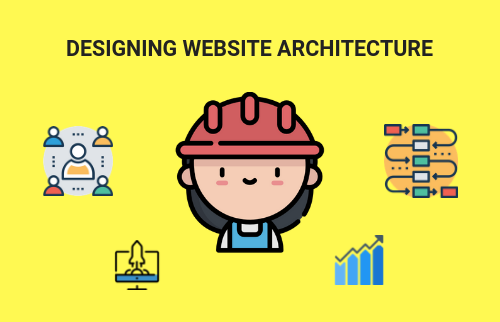
Internal linking builds the foundation of the architecture and structure of a website.
Basically, website architecture refers to the way you structure your website.
However it’s structured, you need to make sure to deliver a great experience for your users.
Taking an example of the real world, the strength of a building lies in its foundation, right?
The same analogy applies to websites. Having a strategic internal linking serve as a strong foundation for the on-page SEO of a website.
Now, try searching for a website’s architecture or structure, you will see the website hierarchy with a pyramid structure. The main page is an internal link to the second level of sub-pages, and the second level of sub-pages are linking to the third level of sub-pages, and so on.
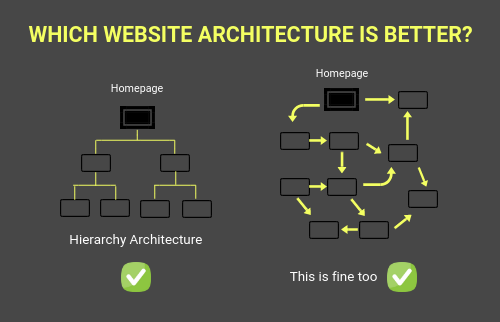
Both web architectures work just as fine!
You should create internal links to answer and fulfill your user intent.
That will form the best and strongest architecture for your website.
Every link carries equity also called link juice.
Link juice contains a number of elements, mainly the value, trustworthiness, topic relevance and authoritativeness of a page. And its transferable throughout the pages and websites via internal linking.
Links that passes juice is one of many signals that the search engine uses to evaluate and determine the page ranking in SEPRs.
Let’s say you have a page that ranks well in Google SERPs.
Which means, this page carries a good quality of link equity that is recognized by Google. You can spread the link equity of this page to other pages that you plan to rank in SERP too.
The question is, how do you spread the juice effectively?
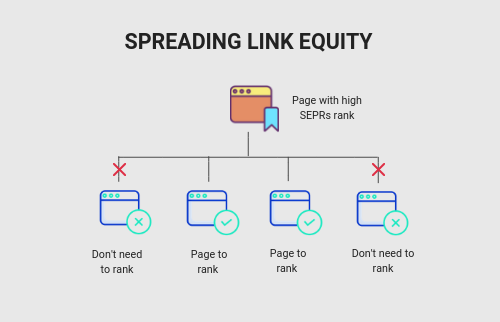
You do not want to spread it to all the pages that are linked to this particular page. That would dilute the overall link equity. When link equity is transferred to a page that does not need to be ranked on SERPs, it is a waste.
Learn to control the link equity or link juice by using dofollow and nofollow effectively.
The more time your readers spend on your website, the better.
Bounce rate is a measure of the percent of visitors who leave your site after viewing only a single page.
Internal links lead to people spending more time on your site thus decreasing your bounce rate.
You should always strive for a low bounce rate.
A contributing factor to a high bounce rate is the failure to present visitors with multiple content options that might interest them. Retaining visitors for longer duration can have an enormous impact on your search rankings.
For instance, suppose your readers land on your music related website looking for the answer to the question, “Who won the Grammy Awards in 2018?”. The page gives them the answer but fails to provide links to supporting musicians like Rihanna, Bruno Mars, or Ed Sheeran – related topics that may have caught their attention and is supposedly able to keep them on your website longer.
Ideally, we want people to visit our web page, stick around and read more.
So, continue to entertain, educate and inform your audiences as much as possible. Don’t just shove mediocre content down your reader’s throat though.
In a survey done by Content Marketing Report, 69% site visitors use internal recommendations to provide inspiration for where to head next.

Keep in mind that the goal of internal linking in seo is to keep your readers on your site. But for the strategy to work out, you have to link them to relevant and useful information.
You’re getting people to hang out and stay, and that’s the best kind of attention you can feed your website.
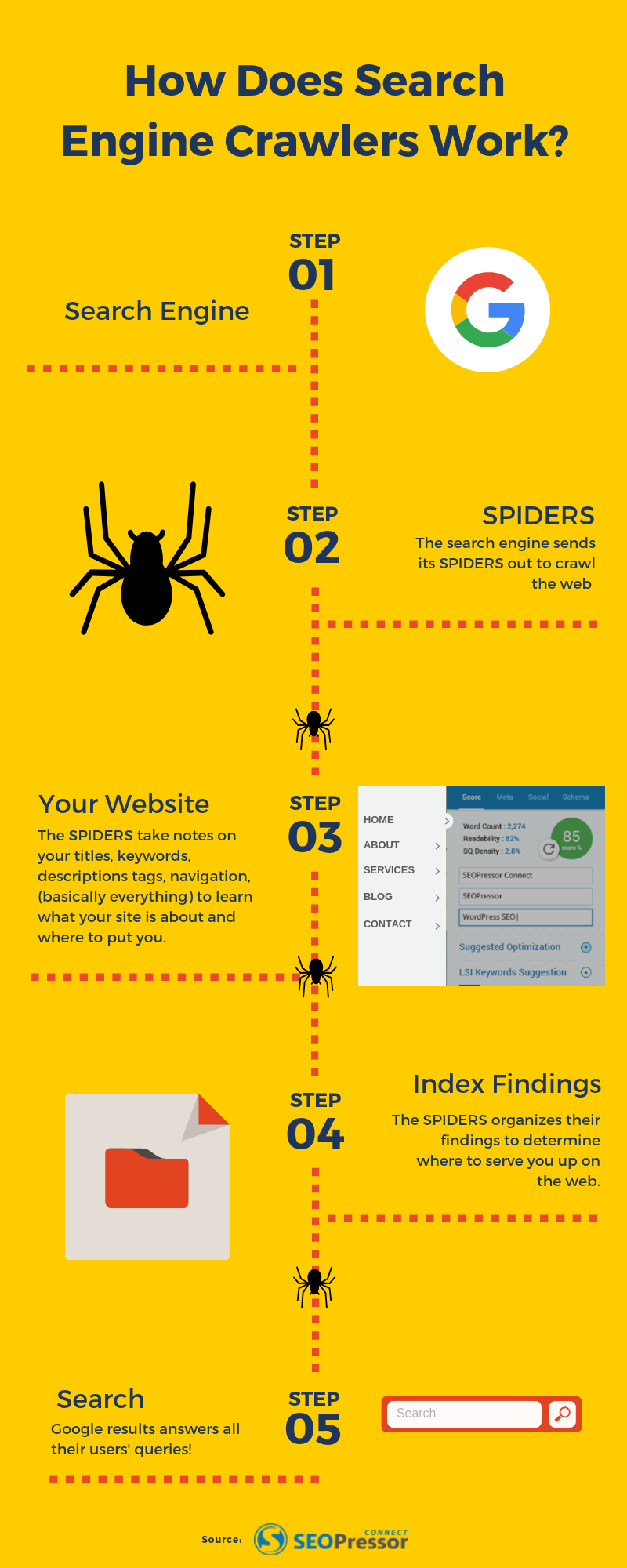
Search engines use crawlers to travel through your site and gather information to help them understand your content and pages.
They are going to visit your website and follow all the links to discover new pages.
Building a strong and smart internal architecture will help crawlers find deeper pages that are not always visited.
Internal links also help these crawlers navigate and recognize which pages are the most important. They grab search engine bots by the hand and guide them down the path to find and index these pages.
For example, a company that sells different types of pens could see their general “Pens” category page ranking above their “German Pens” page for the query [expensive german pen]. Internally linking to the “German Pens” page could help Google recognize it should be returning that page for the given query.
Internal linking creates a better crawling and indexing experience for Google. The easier to crawl, the better a site’s rank on search result pages.
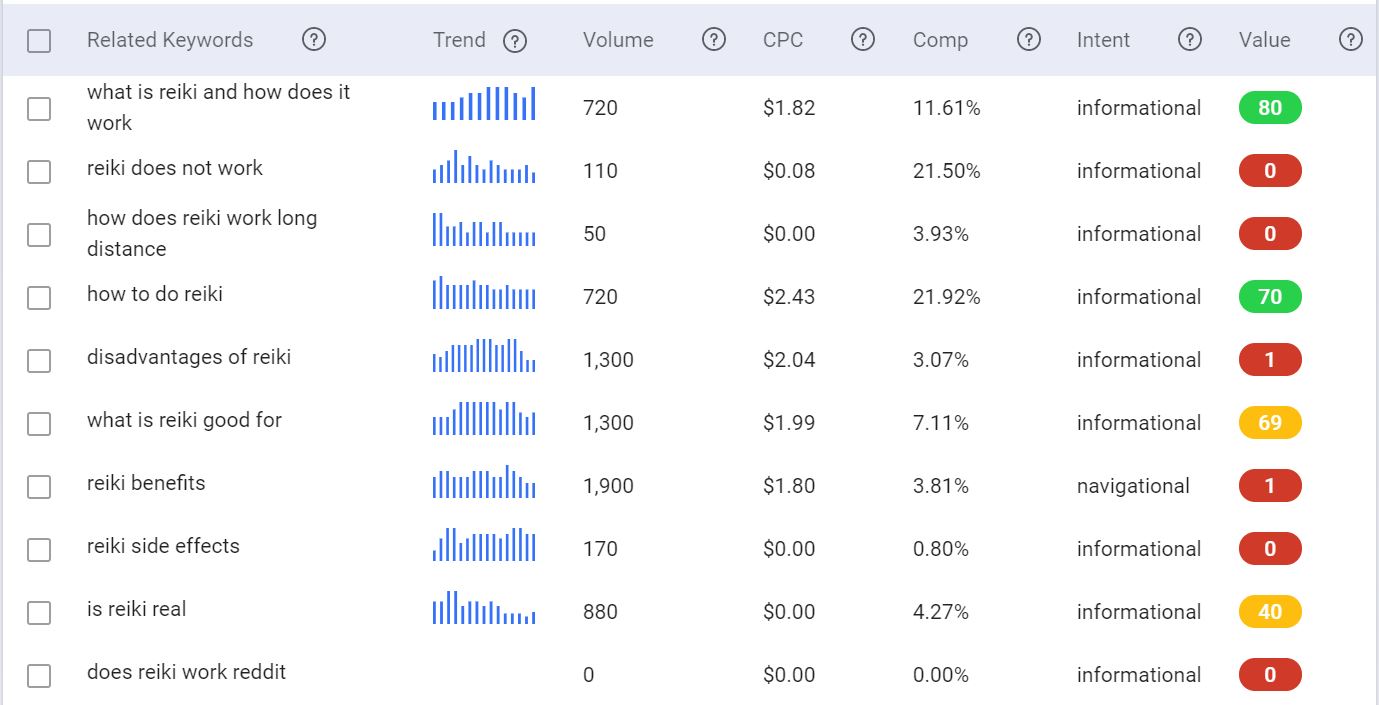
To plan a simple internal link structure that supports specific keywords, start by choosing the keyword phrase and page you’d like to rank for.
Utilize a Keyword tool to have find long-tail keywords that are both relevant and matches the search intent.
If I want a page to rank for ‘What is Reiki’ and I already have a page containing these, I can then point people to the page using the relevant anchor text (the blue clickable text as seen in the previous paragraph).
This sends a clear signal to Google that this page is relevant to people looking for “What is Reiki”. By adding seo internal links pointing to the “Reiki” page, you get a huge boost in your search engine results hence increasing your organic search traffic.

It’s important to use the right anchor text and avoid keyword stuffing.
These days, Google is smart enough to understand the content revolving around the anchor text that says more about the relevancy of a keyword.
So make sure you have natural-looking anchor text in your copy. It’s fine to use keywords but don’t add the exact same keywords to every anchor text.
*Go ahead and give Keyword Intelligence a try today!
Links are a great way to support the point you’re making, and this applies to internal links.
For example, if I’m writing an article about the best time to send emails, rather than listing the reason what is the best time, I can link to an article showing stats on the best and worst times to send emails.
Here’s how the stats are presented in the blog:
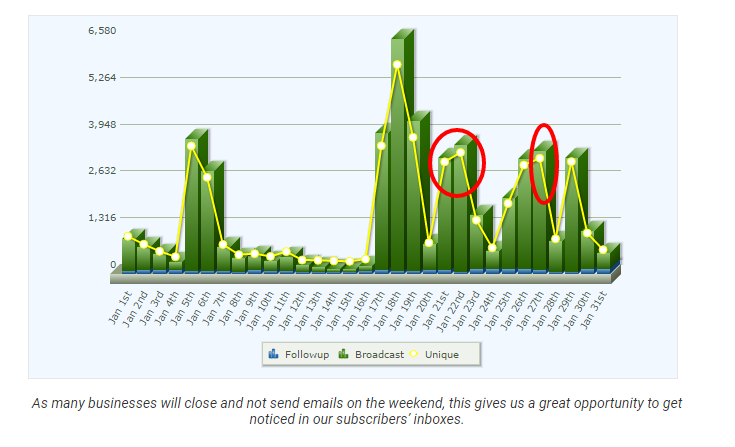
With that, your niche will find enormous value in your site as you provide them with further education on things they are interested to know.

SEOPressor’s blog traffic when monitored last year after doing proper internal linking in our older posts.
Say you have a blog and have written a large number of blogs since the start of your career. I’m pretty sure the older posts of your blog might not be ranking and receiving traffic anymore.
For one, internal linking provides your audiences with further reading options.
If you are writing about a new product or service, and you’ve written a great post in the past, link to it. It provides context for the reader and promotes older content.
By doing this, the newer posts that are getting traffic will help you to flow traffic to the older posts and make an older post rank on the search engine.
Take SEOPressor for example, we have written more than a dozen articles since this blog was launched in 2012 and, while things move quickly in the online world, some of our older content is still very relevant and useful for our readers.

Without a doubt, internal links can build your SEO. When search engine spiders find your site, they follow links to discover additional pages on your site.
Sure, you can leave pages unlinked and hope that the search engines will find each page. But that may take weeks or months for them to get to your page. With the millions of new web pages added daily, those spiders are pretty busy.
Hence, a logical linking structure is both visually appealing and effective.
You can also use internal linking SEO tools to make this process easier.

Absolutely not. Why do I say so?
Well, the benefits stated above are hard to ignore: improved SEO, higher user engagement and a stronger link profile just by reaping the benefits of internal linking.
What’s more, you should even go back and recheck some of your old content so that it has sufficient internal linking!
Internal links require upkeep and maintenance, so making regular site audits is necessary.
Seeing the way Google algorithm works at the moment, it’ll be a wise move to work on your site’s internal linking strategies.
The future is Google after all, and internal linking is one of the major defining factors when it comes to ranking high.
SEO has swiftly become one of the most critical factors in nurturing an online business.
If you haven’t got an internal linking strategy for your website, you’re probably missing out on rankings and potential customers. It’s the most neglected area of e-commerce SEO, and with the help of careful internal linking, you can make big ranking gains.
Being one of the most important aspects of on-page SEO, it sure does make a big difference.
Remember, do internal linking for your website visitors, not for yourself. Use internal linking to improve your web visitor’s user experience, the SEO benefits will follow on naturally.
That’s all for now. Anything I’ve missed out on the benefits of internal linking? Feel free to comment below!
Updated: 27 December 2025


Save thousands of dollars (it’s 100x cheaper)

Zero risk of Google penalty (it’s Google-approved)

Boost your rankings (proven by case studies)
Rank High With This Link Strategy
Precise, Simplified, Fast Internal Linking.
